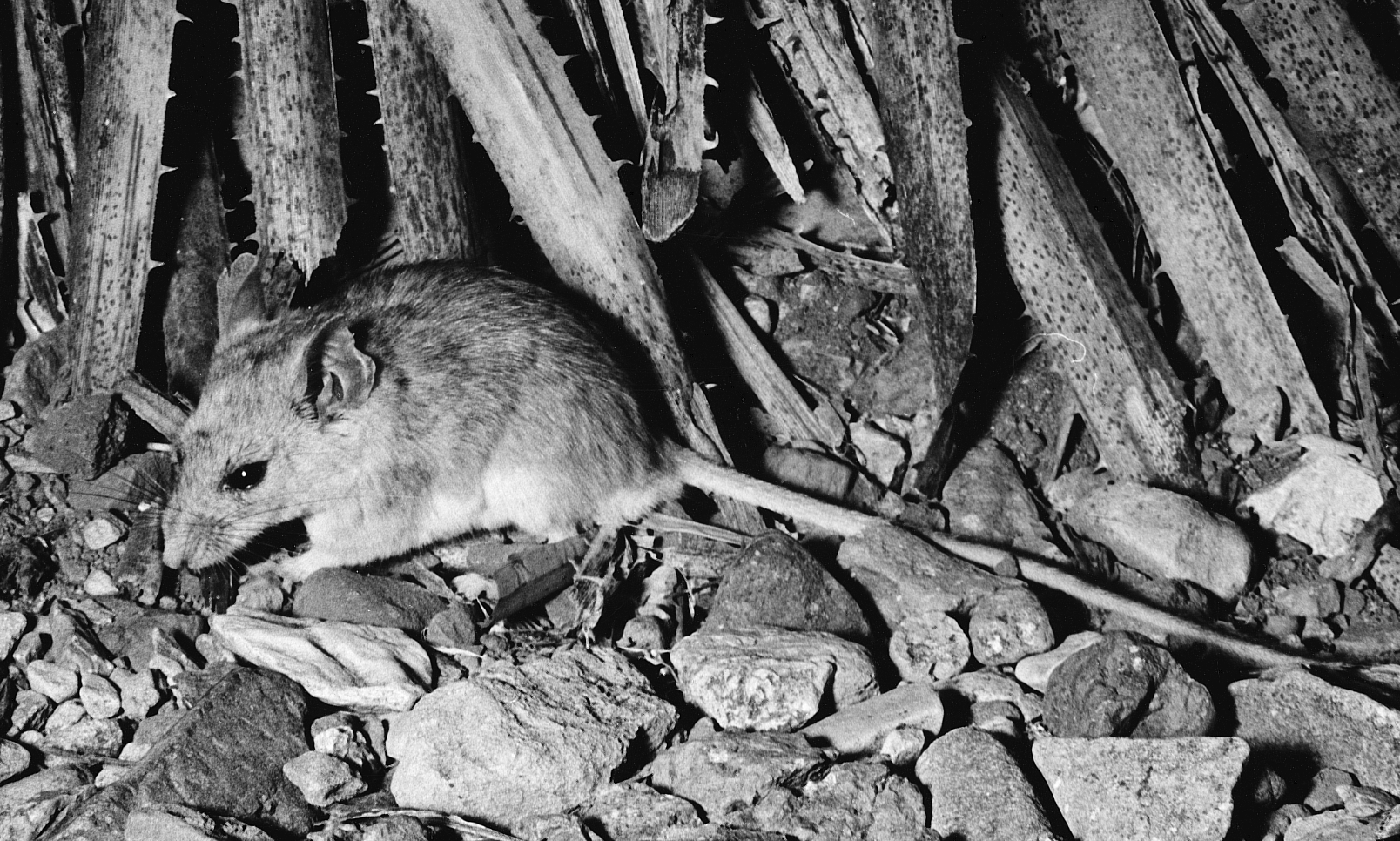CACTUS DEERMOUSE
Peromyscus eremicus (Baird 1858)
Order Rodentia : Family Cricetidae
DESCRIPTION. A medium-sized, long-haired mouse; tail longer than head and body, not sharply bicolor but darker above than below, finely annulated and covered with short hairs; ears large and almost naked; sole of hind foot naked to heel; pelage long, soft, and silky; upperparts ochraceous buff, washed with dusky; lateral line pure ochraceous buff; underparts and feet white. Readily distinguished from other Peromyscus by the combination of long tail, soft pelage, and naked heels. Dental formula: I 1/1, C 0/0, Pm 0/0, M 3/3 × 2 = 16. Averages for external measurements: total length, 185 mm; tail, 102 mm; hind foot, 20 mm; ear, 20 mm. Weight, 18–40 g, averaging about 24 g in males and 27 g in females.

DISTRIBUTION. Trans-Pecos Texas, mainly in lowland desert areas, westward along the Rio Grande to Webb County, and to Val Verde County on the western edge of the Edwards Plateau.

SUBSPECIES. Peromyscus e. eremicus.
HABITS. As the name suggests, these deermice are restricted almost entirely to a desert habitat, especially where rocky outcrops or cliffs offer retreats and nest sites. In the Trans-Pecos region, they typically occur at the bases of cliffs or in rocky outcroppings at elevations below 1,200 m (3,937 ft.). They are expert at climbing and can scramble up stone walls and cliffs with ease. They have been observed foraging in mesquite trees 1–2 m off the ground, and there is some evidence that they also climb hackberry trees and gather the seeds. Their population numbers are high in midwinter and very low in midsummer because they are thought to estivate in their burrows during the summer. By employing torpor as a water-conserving device and as a means of prolonging food stores, the mice escape the driest periods of the summer months. By virtue of the ability to estivate, cactus deermice are probably able to inhabit severe desert situations in which they otherwise might perish.
Peromyscus eremicus is nocturnal and mostly feeds on the seeds of desert annuals. Other parts of plants, as well as insects, also are consumed. In captivity, they drink water, but in the wild they probably supply this need by feeding on succulent vegetation.
The breeding season extends at least from January to October and possibly throughout the year. The number of young per litter varies from one to four, averaging about three, and two or more litters may be reared each year. A captive female is known to have produced three litters in a year. The cactus mouse has only two pairs of milk glands, so only four young can be nursed at one time. Most deermice (Peromyscus spp.) have three pairs. The gestation period is 21 days. At birth the young are blind, pigmented dorsally, and not pink. They weigh about 2.5 g. They develop quite rapidly; the ears unfold in <24 hours, and the eyes open in 15–17 days. Because the litters are never produced in quick succession, the young may be nursed for as long as 30–40 days.
POPULATION STATUS. Common. The cactus deermouse is common throughout its range in Texas.
CONSERVATION STATUS. The IUCN lists the cactus deermouse as a species of least concern, and it does not appear on the federal or state lists of concerned species. It does not appear to face any serious threats.
From The Mammals of Texas, Seventh Edition by David J. Schmidly and Robert D. Bradley, copyright © 1994, 2004, 2016. Courtesy of the University of Texas Press.
Natural Science Research Laboratory
-
Address
Museum of Texas Tech University, 3301 4th street, Lubbock, TX 79409 -
Phone
806.742.2486 -
Email
nsrl.museum@ttu.edu

